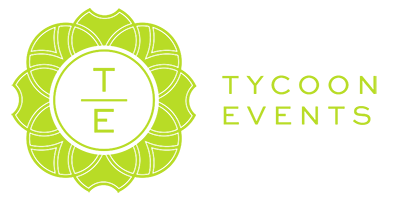“The human experience definition is to connect the mind, body, and spirit to tap into our higher selves with the self-awareness to live a life of purpose, calmness, kindness, confidence, and service.” – Giselle Baumet
Examples of the human experience can include:
- The ability to move through a dimensional space
- The sense of sight, touch, smell, taste and sound
- Building social bonds and social interaction
- Stimulation through learning and exploration
- Participating in a shared experience
- Feelings evoked by aesthetics
- The process of acquiring new knowledge
- Emotional reactions such as joy, empathy and happiness
You’ve likely put two and two together already. If not, what the above all have in common is that they all apply to events.
Beyond the obvious ways to curate an event with the human experience top of mind, what else can we consider?
- Time commitment
- Any event requires time away from something. Think about an attendee’s daily routine. For example:
– Will childcare be required to attend your event?
– How long does the event take away from the work that they would otherwise be doing? We all think about what our inbox is going to look like when we get back to our computer 🙂
– What key meal times does your event overlap with?
– Are you giving attendees enough notice to make any alternative plans that they may need?
– Are there any cultural/ religious events or important holidays that are happening globally that may affect your attendees?
– How easy is the event to get to? Is it located near a major airport? How much travel time is necessary for participants?
- Any event requires time away from something. Think about an attendee’s daily routine. For example:
- Value and outcomes
- Make the purpose of your event intentional
- Will an attendee say that value was achieved for the ticket cost?
- Be specific about your target audience
- Why are you asking your group of attendees to gather together?
- What can they expect from attending your event? What are they leaving with that they didn’t have before?
- Could your event have been an email? What content are participants receiving that is best served in-person rather than alternatives?
- Are you leaving enough space and time in your event itinerary for your audience to create meaningful connections with each other?
- How are you purposefully creating connection and belonging among participants?
- What is the ultimate goal of your event?
- Introvert vs. extrovert
- Design your program around both types of personalities. You don’t one to overshadow the other and you want everyone to feel comfortable.
- Is your event or meeting too early in the morning or too late and night when attendees won’t be at their best and ready to participate how you want them to?
- Communication and setting expectations
- Make your event as approachable as possible. Attendees want to know what they’re walking into.
- Set attendees up for success by setting the expectations from the beginning so that they don’t leave the experience feeling that you’ve under delivered.
- Ensure that you’re communicating the essentials more than one week prior to the event so that attendees can plan accordingly (i.e. transportation, flights, accommodations, childcare, appointments, etc.).
- Environment
- Consider things such as:
– Natural sunlight
– Air circulation
– Accessibility
– Nutritional value of food being served. Are you curating nutrition-dense options or are you choosing foods that may cause a sugar spike and crash?
– Are you offering inclusive meal options such as halal, or vegetarian or gluten-free?
– Spacious floor plans (minimum square feet per person)
– Colours of the room (carpet, walls, drapery)
– Mood
– Seating arrangements and type of interactivity between attendees
– Clutter versus minimalism
– Access to nature
– Music
– Acoustics
– Personal space for attendees’ coats/bags/etc.
– Personalization
– Welcoming/inviting space
- Consider things such as:
In paying attention to the individual human experience, as we gather in events we also must care for the collective experiences of all humans in attendance. How are all participants connected to their own minds, bodies and spirits to tap into the collective higher selves? How can you create an event where people feel like they belong?
By approaching any event with these questions in mind, you can elevate your events into gatherings where people and community flourish.
- Co-authors:
– Eryne Sarabin, CEO and Founder, Tycoon Events
– Sherilyn Trompetter, Principal & Co-Founder, MT Consulting Group
Sherilyn Trompetter, Principal & Co-Founder of MT Consulting Group is a renowned and sought-after facilitator and Xchange certified guide. The Xchange facilitation framework empowers transformational gatherings for the world’s leading organizations such as Costco, Keller Williams, Google, Nike, Facebook, NASA and Conscious Capitalism. Sherilyn works with organizations, teams and member-based communities in any industry to solve business problems, elevate team member engagement and create strategic plans. Her facilitation: - ignites creativity
- leverages strengths
- harnesses collective wisdom
- accelerates outcomes and productivity
- creates sustainable, scalable change
- Through her strength-based process, participants show up feeling they can bring their full gifts and talents – knowing they’ll be well received and supported. The result is a flourishing atmosphere and greater connectivity that encourages individual and collective thriving. “I met Sherilyn for the first time for 30 minutes and I feel understood!” – Director of a $15 million NGO
